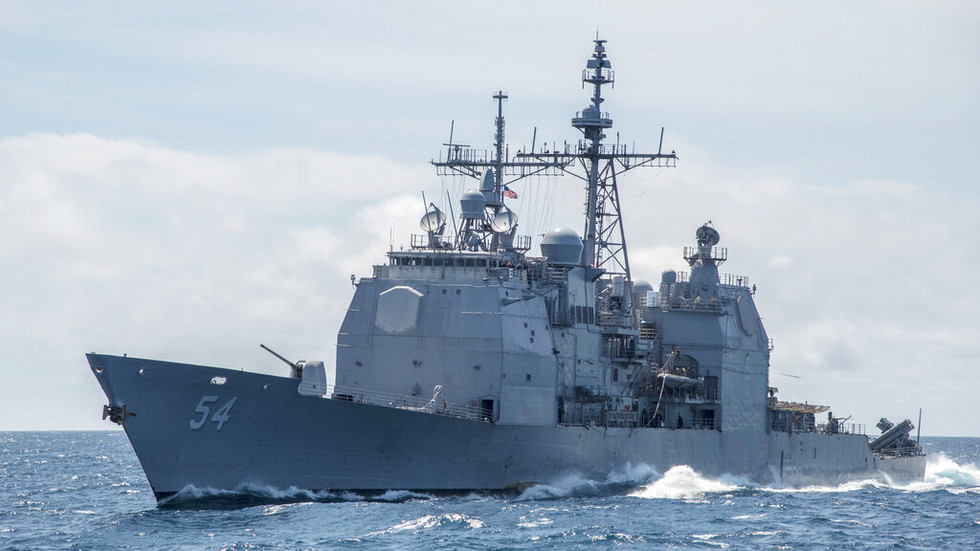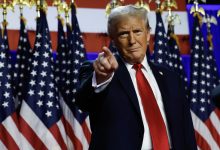
When a general predicts inevitable conflict, he risks inviting pre-emptive attacks
By Timur Fomenko, a political analyst
FILE – This March 6, 2016, photo provided by the U.S. Navy, shows the Ticonderoga-class guided-missile cruiser USS Antietam (CG 54) sails in the South China Sea. © Mass Communication Specialist 2nd Class Marcus L. Stanley/U.S. Navy via AP, File
American Four-Star General Mike Minihan, head of the US Air Force Air Mobility Command (AMC) believes the US and China will go to war by 2025.
“I hope I am wrong. My gut tells me we will fight in 2025,” Minihan reportedly wrote in a memo to his officers, obtained by media outlets. The message instructs AMC personnel to train and get their affairs in order so that they are “legally ready and prepared.”
This prediction is the most direct and blunt yet from an American official on the prospect of a potential conflict between the US and China, besides President Joe Biden’s indications that the US would intervene on the side of Taiwan if China invaded. Of course, Minihan is not a policymaker, and the memo is not an official statement of US military policy towards China. But the influence of the US military and by extension, the military-industrial complex, on US foreign policymaking and on the mood in Washington in general, should not be underestimated.
The reality is, especially as seen in Ukraine, that the risk of a major-power conflict is arguably at the highest it has ever been since the end of World War II or the height of the Cold War. That is because the US sees itself as a rightful and permanent global hegemon. It also sees the competition catching up, however, and is ready to use all means necessary, and to take massive risks, to prevent the rise of rival powers. As such, the US and China risk falling into the so-called, “Thucydides Trap,” which is described as “an apparent tendency towards war when an emerging power threatens to displace an existing great power as a regional or international hegemon”.
The current distribution of power in the world is described as “emerging multipolarity”. Following three decades of American unipolarity, when the US ruled unchallenged, a number of emerging powers are changing the international order. Multipolarity differs from “bipolarity,” where two powers compete for hegemony, the best known example being the US and the Soviet Union during the Cold War.
While bipolarity brings a form of stability, as the military capabilities of both powers are evenly matched and the stakes of a potential conflict are extremely high, history shows multipolarity typically brings instability as it creates an insecure, unpredictable, and competitive international environment. The world of 1914, where a theatre of competing European powers scrambled for international dominance, ultimately combusted into the First World War. As competing world powers expanded their imperialist ambitions, they sought to contain others by forming alliances and starting arms races.
Sounds familiar? It should. Today’s world has some disturbing parallels. The US – an insecure hegemon whose relative power is diminishing as other world powers emerge – is desperately seeking to degrade, undermine and contain its rivals by triggering arms races and expanding alliance systems. Already, the focus on expanding NATO has provoked the conflict in Ukraine, but worse still, the Biden administration is actively seeking to expand that model to East Asia against China, in the form of blocs such as the Quad and AUKUS.
While these alliance systems are in theory supposed to establish deterrence and project American power, in practice history shows this behaviour only provokes, rather than prevents, conflict. The Cold War is the only exception in all history, and the Ukraine conflict has only affirmed this. Because when one state seeks to arm itself with the focus of deliberately targeting another, the other responds, creating an escalatory cycle. Each state therefore races to enhance their capabilities with the goal of responding to the other, and the cycle becomes self-reinforcing.
How do arms races break out into wars? The answer is that in a climate of growing political paranoia, suspicion and distrust which comes with these military tensions, some states like to ask themselves “what happens if they attack me first?” or “are they planning an attack?” The danger stems from when a state perceives that it is facing military containment, or a potential pre-emptive attack, their “only choice” is to attack first and land the first blow. This is, again, rooted in the lessons of history from World War I.
Once Austria-Hungary (an ally of Germany) declared war on Serbia, Germany believed that war with France (an ally of Russia) was inevitable. Therefore, the decision was made to pre-emptively attack France, through Belgium. Why is this relevant today? Because what if at some point, China decides it has no choice but to attack the US or Japan first, before they step in with force of arms to protect Taiwan? Rest assured, we aren’t quite there yet, and Beijing is normally risk averse when it comes to this kind of thing.
The comments by the US general are, of course, overly dramatic, at least at this point. Yet they are dangerous because they reflect the sentiment that sooner or later, war is inevitable, and when it is believed that war is inevitable, it is treated as such, and thus war becomes a reality. Right now, it might seem unthinkable, but so were many other wars in the past. As the US continues to drive up tensions with Beijing, a tipping point, or a miscalculation, becomes ever more likely, and that’s where the danger lies.
The statements, views and opinions expressed in this column are solely those of the author and do not necessarily represent those of RT.




